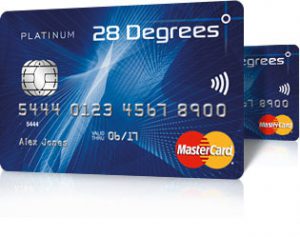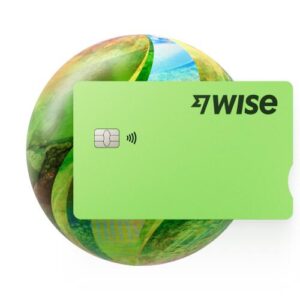Best Ways to Take Money to Italy in 2025
Whether you’re looking to immerse yourself in culture, shop until you drop, experience one of the great cuisines of the world, or just get away from it all by the beach, Italy will be perfect for you. Italy is a popular destination for people from all over the world - but it’s not usually cheap.
Work out how best to organise your travel money, with this run through 4 possible ways to take money to Italy. We’ll cover their benefits and drawbacks, to help you avoid unnecessary fees and pick the right way for you.
Best ways to take money to Italy
In this guide we’ll walk through 4 of the most practical and popular ways to take money to Italy, including our top picks for providers to look at, pros and cons. Here are the common ways to pay overseas that we’ll investigate:
Prepaid travel cards to use in Italy
Ideal for: converting dollars to euros before you go, to lock in an exchange rate and set your budget
Get a prepaid travel card from a specialist service and you’ll also benefit from a digital account you can top up in AUD, before switching over to euros for your trip. That can be super handy if you’d prefer to set your spending budget in advance, or if you spot a great AUD-EUR rate. If you’d prefer to convert as you go, it’s good to know that some cards also let you leave your money in dollars, and automatically convert at the point of payment, with no extra foreign transaction fees to pay.
Most prepaid travel cards support a selection of ten or more major currencies. As a global currency, euros are pretty much always available - just keep an eye out for a card with fair exchange rates, no inactivity fee and no ongoing charges, so you’ll know you’re getting a decent deal with no hidden costs. Getting a card which supports a large number of different currencies is also generally a smart move, so you can use it on future foreign trips, too.
Learn more about our picks for the 6 best prepaid cards.
Wise - our pick for prepaid travel card
With this card:
- Hold and exchange 40+ currencies in your linked Wise account
- No annual or monthly fees to pay, and no minimum balance requirement
- Currency exchange uses the mid-market rate with no markup
- Some free ATM withdrawals available every month
- Virtual and physical cards available
| Wise card pros | Wise card cons |
|---|---|
| ✅ Currency exchange uses the mid-market rate
✅ No foreign transaction fees apply ✅ Free to hold and spend 40+ currencies ✅ Receive payments to your Wise account in a selection of global currencies ✅ No minimum balance or ongoing fees |
❌ 10 AUD fee to get a card in the first place
❌ Free ATM withdrawals are limits to 2 per month, to the value of 350 AUD. Fees of 2% + 1.5 AUD after that ❌ Express delivery fees if you want to get your card as soon as possible |
Pros and cons of taking money to Italy with a prepaid travel card
Pros:
- Euros are supported by pretty much all prepaid travel cards issued in Australia
- Convenient for both spending and cash withdrawals
- Secure as not linked to your everyday AUD account
- Cards are often available with no ongoing fees to pay
- Currency exchange may have better rates than a bank will offer
Cons:
- Some cards have monthly charges - although these may also mean you get access to premium features
- ATM fees may apply, depending on the card you pick
- Some cards charge a fee if you spend in an unsupported currency, or if you spend a currency you don’t hold in your account already
Travel debit cards to use in Italy
Ideal for: secure and convenient spending in EUR in Italy, with no chance of running up credit card interest or penalty fees
You can get travel debit cards from specialist online services and in some cases from banks. Specialist cards usually come with a linked multi-currency account, to spend and withdraw in foreign currencies conveniently. They also offer peace of mind because your funds aren’t connected to your everyday account - so even if the card was stolen, your normal account and card is secure. If you go with a debit card from your bank you’ll usually get some travel focused perks, but you lose the extra layer of security that comes with a separate travel card.
Because we’re talking about debit cards not credit cards, you’ll have to fund your account in advance before you spend - but that means that there’s no interest and there’s no chance of accidentally overspending and blowing your budget.
We’ll go into more detail about our top pick for a travel debit card - Revolut - next, and you can also read more about the best travel debit cards in Australia here.
Revolut - our pick for travel debit card
With this card:
- Hold and exchange 25+ currencies
- Choose the account plan that suits your needs and spending, including some with no monthly fees
- Some no- fee ATM withdrawals and currency exchange with the mid-market rate, based on the account tier you choose
- Extra perks like accounts for under 18s, plus cash back on card spending for top tier account holders
- Travel benefits offered for some account plans
| Revolut card pros | Revolut card cons |
|---|---|
| ✅ Hold and exchange 25+ currencies
✅ Choose from different account tiers to suit different customer needs ✅ Get some no fee ATM withdrawals every month, depending on the plan you pick ✅ Get some currency exchange every month which uses the mid-market rate - limits vary by account plan ✅ No card order fee |
❌ Ongoing fees apply for some account tiers
❌ Out of hours fees push up currency exchange costs on the weekend ❌ ATM fees of 2% apply once you exhaust your no fee withdrawals |
Pros and cons of taking money to Italy with a travel debit card
Pros:
- Spend conveniently in euros - accounts often support dozens of other currencies too
- Make cash withdrawals when you need to so you don’t need to carry a lot of cash at any one time
- No interest or penalty fees - just top up the amount you want to spend and you’re done
- Not connected to your main AUD account, adding a layer of security when you’re overseas
Cons:
- You’ll need to fund your account upfront
- Some transaction fees usually apply
- Some cards have monthly fees to pay to get full feature access
Taking cash in Italy
Ideal for: small purchases, tipping, taking a taxi - and as a back up plan in case your card can’t be used
In Italy, as in many other countries, cash use is falling. However it’s still important - you’ll run into situations when you simply can’t use your card, such as at small market stalls. Plus, carrying a small amount of cash is also a great backup plan in case your card is ever out of action.
You can exchange dollars for euros before you travel if you like, almost anywhere that offers currency exchange. Bear in mind that this may not net you the best available exchange rate. If you carry AUD cash with you, you’ll often be able to exchange it with money changers once you arrive, but how easy this is will depend entirely on where you’re headed, as exchange services are far more common in large cities than in smaller towns and rural areas.
Generally the most convenient way to get cash for your trip to Italy will be to make ATM withdrawals as and when you need to. This will mean you don’t need to carry too much all at once, and if you use a dedicated travel card to make your withdrawal you may cut your overall costs, too.
Do I need cash in Italy?
Generally carrying a little cash is a good idea, for tipping and small purchases among other things. It’s also a handy backup in case you can’t access your card for some reason. However, it’s not usually a smart plan to carry lots of cash for security reasons. Instead, use a prepaid card or travel debit card to make ATM withdrawals and you’ll be able to get the cash you need, when you need it, often with low or no fees, depending on the card you pick.
How to buy EUR on arrival in Italy?
You’ll find money changing services in Italian transport hubs, cities and tourist areas. Check the exchange rates and fees before you switch your dollars for euros. Usually the overall costs are lower in areas where there’s more footfall and more competition - in a city centre for example, rather than your hotel.
How to buy EUR in Australia?
You can also exchange AUD to euros in advance before you leave Australia. Take a look at a service like Travelex, to order the EUR cash you need online and either collect in a branch or have it delivered to home. Fees and exchange rate markups may apply, so do compare your options before you commit.
Best place to get euros from
There’s no single best place to get your travel cash - it’ll all depend on where you’re heading and how good a rate you can find either at home or on arrival. Compare a few options and bear in mind that it’s usually worth avoiding currency exchange in the airport or in your hotel.
Pros and cons of taking cash to Italy
Pros:
✅ Great for tipping, shopping in markets and other times only cash will do
✅ Convert in advance or take dollars and switch on arrival
✅ Set your budget in advance so you know exactly what you have to spend
Cons:
❌ Carrying a lot of cash isn't safe - tourists are often targeted by petty thieves
❌ You’ll have to invest time during your break or in advance, shopping round to get a good deal
❌ Exchange rates vary widely and usually include a markup - an extra fee
Travel credit cards to use in Italy
Ideal for: earning extra miles or rewards while spreading the cost of your spending over several months
If you regularly spend on a credit card it’s worth looking at whether there’s a smart way to do more with your money with a travel credit card. You may find you can get low or no foreign transaction fees, more ways to earn rewards when you spend in foreign currencies, or complimentary insurance.
Having a credit card with you when you’re overseas can also be handy when you check into a hotel or rent a car, where a credit card may be accepted as a payment guarantee. Bear in mind though, travel credit cards usually have fees to pay, plus interest charges and cash advance fees - which can all add up quickly.
Learn about the best travel credit cards in Australia here, and read on for more on our top pick.
28 Degrees - our pick for travel credit card
With this card:
- Order online and start spending with your virtual card instantly if approved
- No annual or monthly fees
- No foreign transaction or currency conversion fees
- Make ATM withdrawals overseas - fees apply for this service
- Unlock perks like discounts on travel bookings and internet roaming packages

| 28 Degrees pros | 28 Degrees cons |
|---|---|
| ✅ No annual or monthly fees
✅ No foreign transaction fees - your payment is converted to AUD using the Mastercard exchange rate ✅ Repay your bill in full monthly to avoid interest or penalty fees ✅ Travel perks and partner discounts available |
❌ Cash advance fee of 3% or 4 AUD (whichever is greater), plus interest, when making an ATM withdrawal
❌ Interest charges apply if you don’t repay your bill in full monthly ❌ Subject to eligibility and credit checks |
Pros and cons of travel credit cards to Italy
Pros:
- Earn rewards and discounts, or get travel perks - depending on the card you pick
- Spread your costs out over a few months
- Some cards have low or no foreign transaction fees
- Credit cards are useful as a payment guarantee in some situations
Cons:
- Interest and fees usually apply if you don’t pay back your bill immediately
- Cash advance and interest costs apply when using an ATM
- Eligibility rules apply
Travel requirements from Australia to Italy
If you’re travelling with an Australian passport and heading to Italy you won’t need a visa for visits of up to 90 days in most situations.
Bear in mind that Italy is part of the Schengen Agreement, which allows for borderless travel within the member countries, with unified visa and visa waiver rules. That means that time spent in Italy will count towards the 90 allowance you have across all Schengen countries. If you’re planning a multi-destination trip, or you’ll be in Europe for over 90 days in total in a 180 day period, you’ll need to check whether a visa is needed.
Check the government’s Smart Traveller website to learn more.
Does Italy accept Australian dollars?
No. You won’t be able to spend AUD anywhere in Italy. If you’re carrying dollars with you you'll need to exchange them for the local currency wherever you are.
Best currency to take to Italy
You can only spend euros in Italy. You can exchange for euros before you travel, make an ATM withdrawal on arrival, or exchange cash in Italy. If you plan to exchange on arrival you’ll be fine to carry AUD.
How much money do I need per day in Italy?
Italy is a very varied place, so how much you’ll need to pay for your visit will depend a lot on where you’re headed and what you like to do. To put this in context, in Italy on average you’ll find a 3 course lunch for 2 will set you back in the region of 100 AUD, and a single bus ride could be 2.5 AUD. However, in Rome - naturally one of the more expensive destinations - that lunch for 2 will set you back closer to 120 AUD.
Do some detailed research to see how much things are likely to cost wherever you’re headed, so you can plan your budget. Get more detailed cost information by country and city, from Numbeo.com.
How much does it cost to fly from Australia to Italy?
Flight costs vary widely depending on where in Australia you’ll leave from and where exactly you need to be in Italy. At the time of writing (August 2023), you can find flight deals from around 1,300 AUD return from Melbourne, for example.
Top travel money tips to Italy
Here are a few final tips to help your money go further while you’re away:
- Have several different payment methods in case one isn't accepted wherever you are
- Get a travel money card before you leave to make it easier and cheaper to spend and withdraw in Italy
Avoid common travel money traps in Italy with this handy guide
Conclusion
There’s no single best way to take money to Italy, and for most people, having a variety of ways to pay makes sense because then you have a back up plan if one payment method isn’t accepted. One good idea is to get a travel card - such as a prepaid travel card from Wise or a travel debit card from Revolut - to use for spending and withdrawals, and to carry this alongside your regular debit or credit card for emergencies, and a little cash. This will often mean you can cut the costs of overseas spending, by using your specialist travel card, and you can stay safe by minimising the amount of cash you need to hold at any given time.
Use this guide to decide which option will work best for you to take money to Italy, based on your own preferences and needs.
FAQs - Best ways to take money to Italy
Should I exchange money before I travel to Italy?
You won’t necessarily need to exchange money before you travel. Making a cash withdrawal at an ATM on arrival in Italy can also work well, and may also be better value overall if you have a travel card from a provider like Wise or Revolut.
Can I withdraw euros from a local ATM?
You can’t withdraw any euros at a normal ATM in Australia, but you’ll be able to get euros from an ATM on arrival easily. Use a travel card and your withdrawal may even be free.
Are prepaid travel cards a good way to take money to Italy?
Travel prepaid cards from services like Wise have some great features like multi-currency balances and low or no ATM fees. They can also be a safe way to spend when abroad - consider getting a travel prepaid card to use alongside your other preferred payment methods, to bring down the costs of your trip.
Can I use cash in Italy?
Yes. Sometimes cash is the easiest way to pay - but using a card is convenient where it’s possible. Having some cash in euros, and a travel card, is a good way to make sure you’ll be able to pay no matter what happens.


